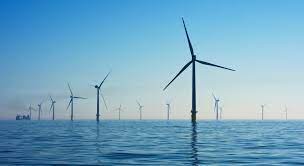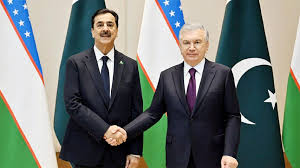UK mulls revamp of offshore wind pricing after failed auction

London: The UK government is considering industry requests for price indexation and ringfenced offshore wind support after no bids in the last auction dealt a blow to UK climate targets.
The UK’s failure to allocate any offshore wind contracts in its latest renewable energy auction highlights the ongoing cost challenges faced by developers and suppliers in Europe and the United States.
The UK aimed to award up to 5 GW of contracts for difference (CfDs) to offshore wind projects but no bids were submitted after developers argued the prices offered by the government were too low. The UK lowered the price cap to 44 pounds per MWh ($53.9/MWh, 50.9 euros/MWh), down from 46 pounds/MWh in the previous auction round, despite rising component costs.
The cost of raw materials and components soared following the coronavirus pandemic and Russia’s invasion of Ukraine and high interest rates have put further pressure on developers and suppliers. The cost increases came after years of intense market competition that drove down costs and squeezed the margins of wind turbine suppliers.
Developers and suppliers are calling for prices to be indexed to inflation in the next UK auction to prevent margins being sliced between the allocation of the contracts and the start of construction. Other requested changes include a separate allocation pot for offshore wind.
The UK government will incorporate industry feedback and learnings into its next auction, a spokesperson for the Department for Energy Security and Net Zero (DESNZ) said Events. The UK has a highly ambitious target of 50 GW offshore wind by 2030 and the next auction is due to start in less than six months.
Costs must be fairly reflected to re-establish a deployment pipeline, a spokesperson for offshore wind investor Copenhagen Infrastructure Partners (CIP) said.
“Market realities need to be priced in to reinstate confidence, maximise participation and send a longer-term signal for future [development expenditure] commitment,” the spokesperson said.
The strike price offered in the UK’s latest auction did not reflect real-world costs, Roger Salomone, Head of Public Affairs UK & Ireland at turbine supplier Vestas, said.
In July, Swedish utility Vattenfall halted the development of its 1.4 GW Norfolk Boreas offshore wind project off the coast of England due to rising costs and supply chain delays.
Wind farm costs have increased 40% and this has “had an impact on the risk profile of both developers and the supply chain,” a Vattenfall spokesperson said.
The latest price offered by the UK was particularly low considering the grid and permitting requirements of winning projects. Ireland recently allocated its first offshore wind contracts at 86.05 euros/MWh ($91.1/MWh), far higher than the UK even if it does not benefit from a mature local supply chain.
UK bidders voiced concerns over grid connections as well as price, Sarah Brown, Europe Programme Lead at thinktank Ember, said.
An abundance of projects has led to long connection queues and projects that are not progressing will need to move aside under new reforms being implemented by network operator National Grid. Developers will also be able to develop their own connections to the grid “but this brings additional costs and low strike prices for CfDs do not accommodate these,” Brown said.
In some markets, offshore wind prices have gone up due to a lack of auction participants and industry groups are calling for the auctions to include non-price criteria such as local content thresholds to support manufacturing growth and avoid price-only bidding.
Rising costs have also impacted U.S. offshore wind deployment. Developers are seeking new power contract terms on at least ten East Coast projects in a further blow to President Joe Biden’s climate targets. Further south, Germany’s RWE was recently awarded a lease in the Gulf of Mexico at a record low price after only two companies bid.
Meanwhile, oil and gas groups have been able to use their large balance sheets to outbid competitors and enter new markets. In July, BP and TotalEnergies were the only winners of a 7 GW offshore wind auction in Germany, paying a combined 12 billion euros for site leases and guaranteed grid connections at unsubsidised prices. The winners were chosen following a second round of bidding based only on price and they have the option to pay most of the lease payments after completion.
Offshore wind developers must navigate a range of different pricing mechanisms in Europe.
Germany’s auctions offer no price indexation but France’s system better reflects costs by indexing contract prices and capping prices in both directions, a spokesperson for German utility EnBW said.
Norway is set to auction offshore wind capacity in the coming years and “the auction parameters being discussed at the moment are not yet fully reflecting the external market factors,” the spokesperson said.
Beyond pricing mechanisms, the UK should carve out a separate funding pot for fixed-bottom offshore wind, as used in earlier contracting rounds, to ensure offshore wind projects are allocated, James Brabben, UK Senior Manager, Regulatory Affairs at RWE, said.
The latest auction allocated 1.8 GW of onshore wind contracts and 1.9 GW of solar after the government ended an effective moratorium on onshore wind and solar in England.
The UK should also add later delivery windows to allow developers to “catch up on the lack of bids,” Brabben said. A clear and consistent pipeline of projects is needed to support manufacturing investments and minimise costs.
Years of installation learnings and supply chain buildout led to a significant drop in costs and made offshore wind highly competitive in the UK.
“We cannot assume costs will continue to fall going forward,” Salomone warned.
An easing of geopolitical risks could put downward pressure on prices but development costs over the next few years are likely to remain higher than in previous auctions, Alex Asher, Senior Consultant at Cornwall Insight, said.
“The drivers for higher prices are unlikely to disappear quickly and [developers] could have to factor in increased risk to their engagement in the market,” he said.
“[Costs] can change up until financial close [or] signing contracts with manufacturers…so generators need to factor this into their bids.”





